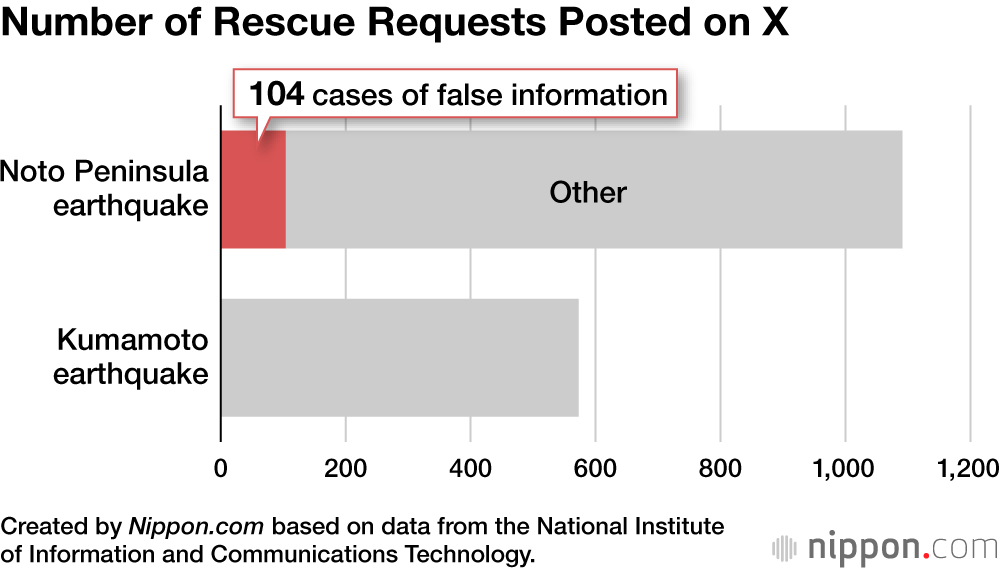
False Information Common in X Posts About Noto Peninsula Earthquake
Society Technology Disaster- English
- 日本語
- 简体字
- 繁體字
- Français
- Español
- العربية
- Русский
After the earthquake that struck Noto Peninsula on January 1, 2024, 10% of the rescue requests posted in Japanese on X (formerly Twitter) during the first 24 hours are estimated to have been false. This is the finding of a study conducted by the National Institute of Information and Communications Technology, which is under the jurisdiction of the Ministry of Internal Affairs and Communications.
NICT examined 16,739 pieces of information related to the disaster in Ishikawa Prefecture from Japanese postings on X made within 24 hours of the earthquake, and used artificial intelligence to narrow this down to 1,091 pieces of information concerning rescue requests. Researchers checked this against information about actual damage to determine their authenticity.
Results of the analysis found that 104 posts, or roughly 10% of the total, included information deemed to be false. Many rescue requests were posted from multiple accounts with the same content, despite having no actual information concerning damage. Some of the posts contained names of districts that did not exist in the affected areas, and some were presumed to have come from overseas accounts.
At the time of the 2016 Kumamoto earthquake, 573 of the 19,095 postings with disaster information included a rescue request. In comparison, there were twice as many rescue requests after the Noto Peninsula earthquake. There was only one case of false information for the earthquake in Kumamoto.
According to a NICT representative, there has been “an increasing number of cases of posts using copied or false content to gain impressions.
(Translated from Japanese. Banner photo © Pixta.)

